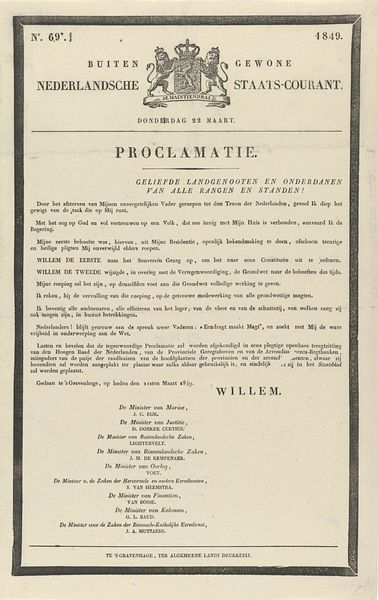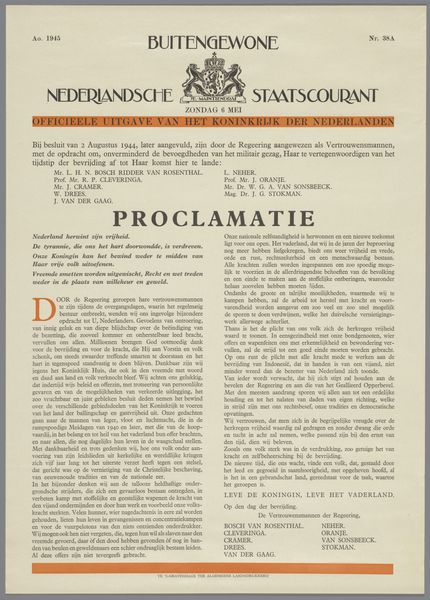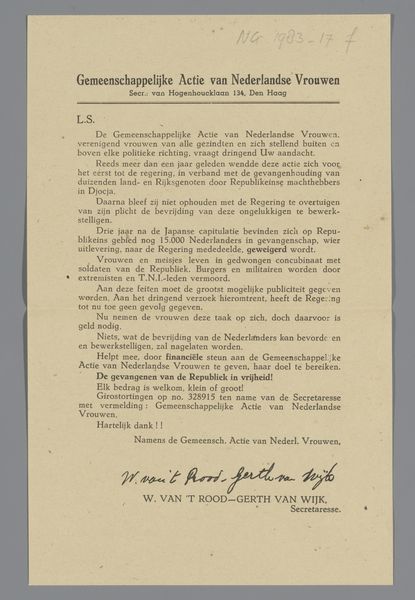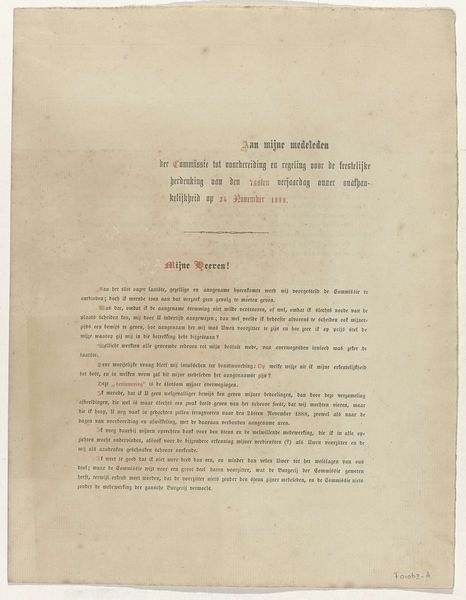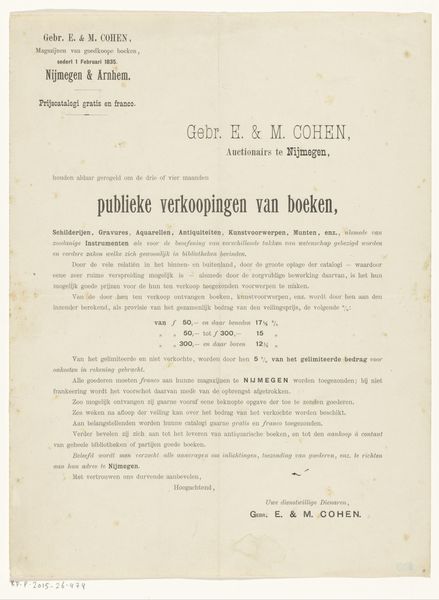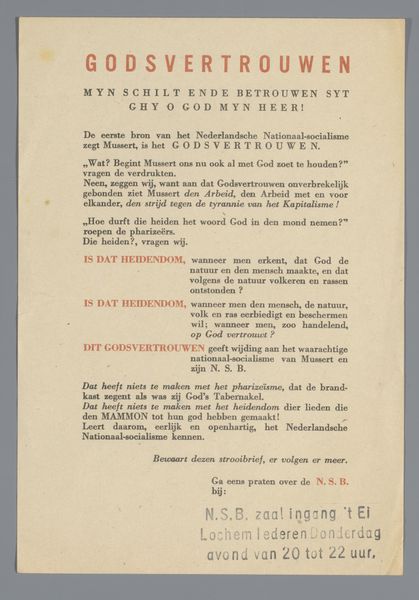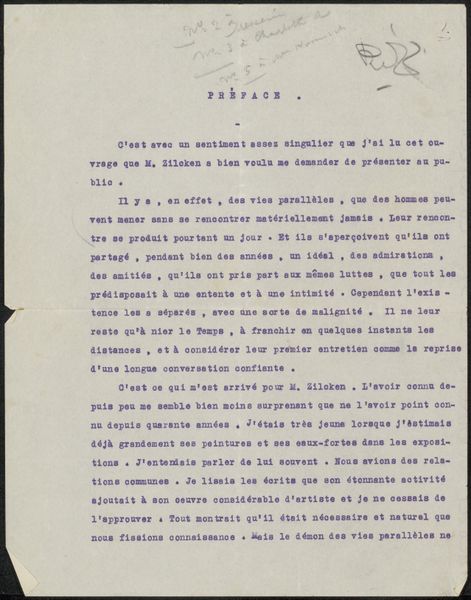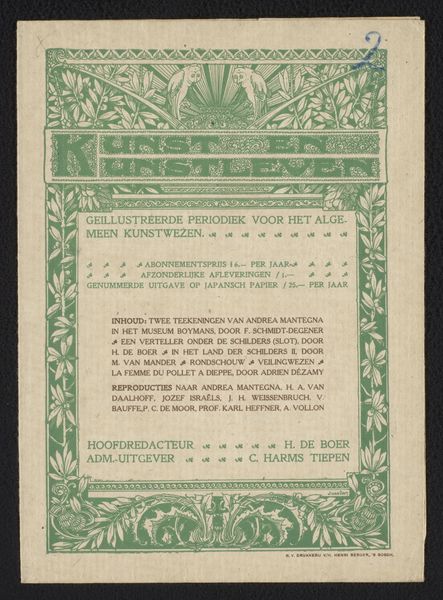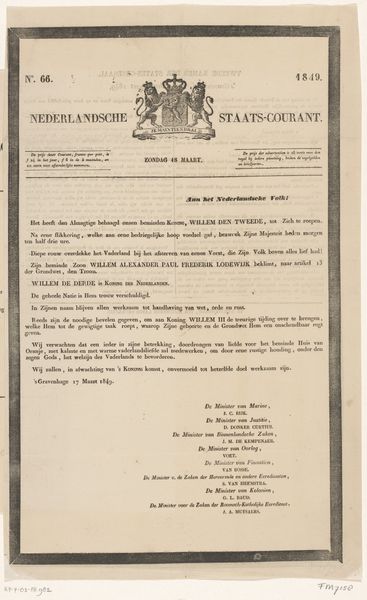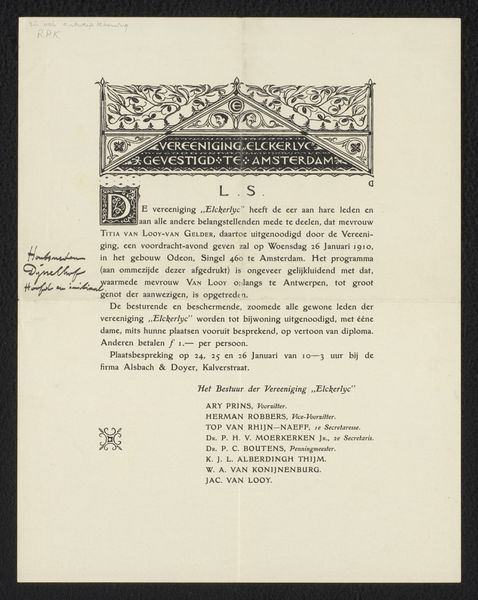
Proclamatie van koning Willem III over ontbinding Tweede Kamer Possibly 1866
0:00
0:00
print, textile, paper
#
aged paper
#
paper non-digital material
#
dutch-golden-age
# print
#
textile
#
paper
Dimensions: length 25.3 cm, width 19.8 cm
Copyright: Rijks Museum: Open Domain
Editor: Here we have a proclamation by King Willem III, likely from 1866. It’s a printed document on what appears to be aged paper, framed by a delicate blue and red border. It’s visually quite striking. The weight of history just seems to radiate from it, though the text itself is unfamiliar. What do you see in this piece? Curator: Instantly, I recognize symbols of authority and the deliberate construction of a historical moment. The use of formalized language and elaborate framing – those decorative elements– are conscious attempts to connect to a tradition of power, recall visual grandeur. Editor: Do you mean he’s trying to create a feeling of importance? Curator: Precisely. Consider, too, the date. 1866. This was a time of significant political tension and the rise of nationalism. A proclamation like this isn’t just about conveying information. Editor: It's about solidifying his position, right? The imagery becomes part of that process. Almost like he's trying to convince the public through the very look and feel of the document. Curator: Absolutely. It’s an effort to imprint his authority and to root it in the cultural memory. Look how he emphasizes “Wij Willem III, bij de Gratie Gods”, that’s powerful phrasing implying an unbroken chain of command and continuity, from past rulers and even a higher power to his own sovereignty. This kind of appeal is all about creating an emotional resonance beyond just the facts of the political situation. What’s interesting is that a visual culture evolves that continues the memory through symbols, and our interpretations continue that cycle. Editor: I never really considered the visual weight of these things before. It makes you realize that every choice is significant, even something that seems as simple as the border design. Curator: Indeed. Every detail contributes to a larger narrative, shaping not only our understanding but also our emotional connection to the past.
Comments
No comments
Be the first to comment and join the conversation on the ultimate creative platform.
